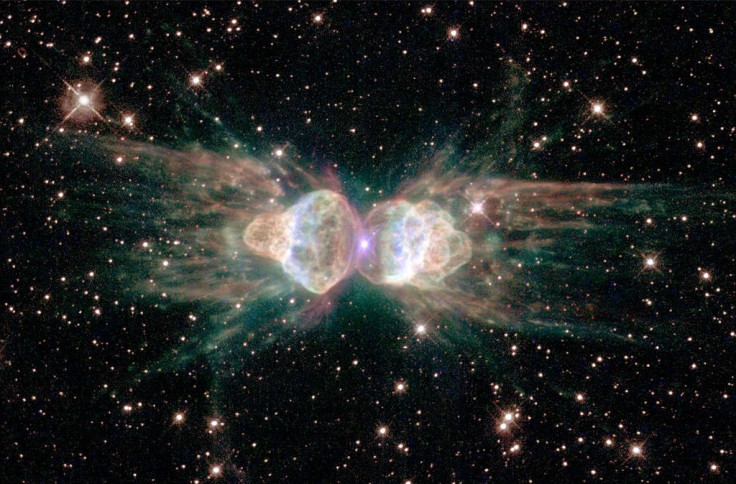
The NASA Hubble Telescope recently discovered a rare celestial phenomenon called Herbig-Haro. The space agency tweeted an image of stars breaking past clouds of gas and dust, creating a unique cosmic lightsaber!
The Hubble Space Telescope has captured many amazing photos since it was launched in 1990. In the years that followed, the space observatory received many further upgrades that improved its space-gazing abilities.
On Friday, NASA tweeted Hubble's latest discovery in the galaxy, the space object called HH111.
Hubble Space Telescope Pictures: Herbig-Haro Lightsaber
The Hubble tweet greeted with "May the #HubbleFriday force be with you!" The tweet contained an image with a description saying the "cosmic view isn't a lightsaber - it's a Herbig-Haro object, formed when a young star ejects jets of material that collide with nearby clouds of gas and dust."
Arguably, the photo tweeted by Hubble shows great resemblance to the "Star Wars" lightsaber. The energy that lights up these stars are especially bright on the bottom section, which resembles the lightsaber handle. On the top right, three energy waves expand and fade, which seems like a dynamic representation of a "lightsaber blade shooting out."
However, the biggest highlight in the picture is actually the stars' intersection point in the middle, between the red could of gas and dust. Researchers explained that it was a rare phenomenon that only develops under very specific circumstances.
Twitter user Venus explained the phenomenon in a reply. The lightsaber in the photo is actually "composed of twin jets of superheated" stars.
NASA provided more details on the event through their blog post. They said that newly formed and highly active stars expel narrow jets of ionized gas. The photo captured showcased this ionized gas that collided with clouds of gas and dust at speeds of hundreds of miles per second. The energetic collision is called Herbig-Haro, which created objects like HH111.
The HH111 was captured through NASA/ESA Hubble Space Telescope's Wide Field Camera 3 (WFC3). Note that WFC3 captures its photos through optical, ultraviolet, and infrared wavelengths. The Herbig-Haro was difficult to capture because it was surrounded by dust and gas. However, WFC3 achieved the feat with its infrared wavelengths by making observations unaffected by gas and dust.
NASA Hubble Telescope Pictures of Rare Cosmic Events
This cosmic lightsaber is only one of the many amazing achievements Hubble accomplished in its space exploration. In August, Hubble also captured two other picture-perfect space phenomena.
The Hubble space telescope snapped galactic triplets in a gravitational tug-of-war. The event was immediately featured in Atlas of Peculiar Galaxies, a list that records unique galaxies in the universe. The image specifically showed three galaxies, one on either side and another on the center, overlapping each other's territory. The system was identified as Arp 195
Afterward, Hubble also captured another image of seven brilliant lights in a circular formation, later implied as an "Incredible Einstein ring." In truth, however, the image was revealed to contain two galaxies and one distant quasar known as 2M1310-1714.
Related Article: NASA Asteroid Warning 2021: Where to Track Statue of Liberty-Sized Asteroid, Close Approach Date and More Details









